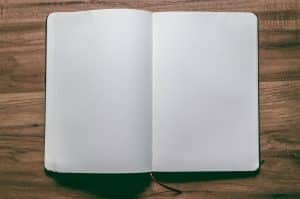In decision-making, both personal and professional, biases can creep in unnoticed, distorting our judgment and leading to less-than-optimal outcomes. Mindful drafting, the practice of intentionally pausing, reflecting, and writing out ideas before finalizing decisions, is a simple yet powerful tool to slow down these biases. By providing mental space and structure, mindful drafting encourages deeper thought and consideration, helping individuals make more deliberate, thoughtful choices.
How mindful drafting can help slow down the automatic biases that influence our decisions and offer practical strategies to implement it in everyday decision-making processes.

What is Mindful Drafting?
Mindful drafting involves the act of consciously writing or outlining your thoughts and decisions, while actively engaging in reflection and awareness throughout the process. It’s about taking the time to slow down, organize your thoughts, and examine your reasoning before reaching conclusions or taking actions.
This practice is similar to writing a first draft of an essay, where ideas are expressed and evaluated, but the goal is to refine the thoughts without rushing toward a final conclusion. Mindful drafting gives you the space to pause and examine your assumptions, providing an opportunity to identify biases and correct them before they affect your decisions.
How Bias Affects Decision-Making
Biases are inherent cognitive shortcuts that our brains use to make decisions quickly. While they serve as time-saving mechanisms, they can also lead to errors in judgment. Common biases include:
-
Confirmation bias: Favoring information that supports your preexisting beliefs.
-
Anchoring bias: Relying too heavily on the first piece of information encountered.
-
Availability bias: Giving undue weight to information that is most readily available, such as recent events.
These biases influence our decisions without us being fully aware of them. In fast-paced environments or situations that require quick decisions, these biases can lead us to overlook key information, dismiss alternatives, or make judgments that feel right but are ultimately flawed.
How Mindful Drafting Slows Down Bias
Mindful drafting helps slow down the decision-making process, offering several benefits in overcoming cognitive biases:
1. Creates Time for Reflection
The act of drafting forces you to slow down and reflect on your thoughts. When you write out your ideas and decisions, you allow yourself the space to pause and consider them more carefully. This process naturally reduces the speed of decision-making, giving you time to step back from emotional reactions or automatic biases.
2. Encourages Critical Thinking
Mindful drafting pushes you to think critically about the reasoning behind your decisions. As you write, you are prompted to evaluate whether your conclusions are based on solid evidence or biased assumptions. This can help you spot potential errors in logic or inconsistencies in your reasoning before they become part of your final decision.
3. Raises Awareness of Biases
The very act of consciously writing down your thoughts makes you more aware of your decision-making process. As you reflect on each idea, you can notice any biases that might be influencing your choices. For instance, if you find yourself writing in favor of an option just because it aligns with what you already believe, you can pause to challenge this bias.
4. Improves Objectivity
Mindful drafting helps distance you from immediate emotional reactions or pressures that can distort your judgment. By writing out your thoughts and taking a step back, you are able to approach the decision with more objectivity. This allows you to weigh the pros and cons more evenly, without being swayed by personal preferences or unconscious biases.
Practical Tips for Implementing Mindful Drafting
1. Set Aside Time for Drafting
To make mindful drafting effective, set aside specific time for the process. Rather than making snap decisions, allocate time to write out your thoughts, list out options, and reflect on your reasoning. This dedicated time for drafting ensures that you are not rushed and can give full attention to the decision-making process.
-
Tip: Set aside at least 15-30 minutes to write and reflect on your decision before finalizing it. This time will help you slow down and gain clarity.
2. Outline Your Thoughts
Start by outlining your ideas and options in a structured way. Rather than diving straight into a conclusion, break down the decision into components—what are the pros and cons of each option? What information do you have, and what are the gaps in knowledge? This structured approach ensures you address all aspects of the decision without rushing toward an answer.
-
Tip: Use bullet points or a decision matrix to organize your thoughts. This will give you a clearer overview of the options and help identify areas where bias might influence your choices.
3. Ask Yourself Key Questions
As you write, ask yourself questions that encourage critical thinking and challenge your assumptions. Questions like:
-
What evidence supports this decision?
-
What information am I ignoring or overlooking?
-
What would I advise someone else in a similar situation?
These questions will prompt you to look beyond your immediate biases and evaluate your decision from a more objective perspective.
4. Pause and Revisit Your Draft
After completing your first draft, step away from it for a while before revisiting it. This break allows you to gain perspective and identify areas where bias may have crept in. Upon returning to the draft, you may notice assumptions you made or biases that influenced your thinking, giving you the opportunity to refine your decision.
-
Tip: If possible, revisit your draft the next day, after a period of reflection, to ensure your decision-making process is as unbiased as possible.
The Benefits of Mindful Drafting in Decision-Making
1. Improved Accuracy and Objectivity
Slowing down the decision-making process through mindful drafting helps reduce the influence of biases, leading to more accurate and objective decisions.
2. Enhanced Creativity
By taking the time to write and reflect on your options, you create space for new ideas and perspectives to emerge. Mindful drafting encourages creative thinking, as it allows you to approach decisions from multiple angles and consider innovative alternatives.
3. Reduced Stress
When you take the time to pause and think through your decisions carefully, you reduce the stress of rushed choices. The act of mindful drafting can alleviate the anxiety that comes with uncertainty, as it provides clarity and confidence in your decisions.
4. Better Long-Term Outcomes
Decisions made with mindfulness and careful consideration tend to have better long-term outcomes. By reducing biases and considering all options thoughtfully, you are more likely to make decisions that align with your values and goals.
Conclusion: Harnessing the Power of Mindful Drafting to Overcome Bias
Mindful drafting is a powerful tool to slow down bias in decision-making. By taking the time to write, reflect, and challenge your assumptions, you create the conditions for clearer, more thoughtful decisions. This practice not only reduces the influence of cognitive biases but also fosters creativity, improves problem-solving, and ultimately leads to better decision-making in both personal and professional contexts.
The next time you face an important decision, try using mindful drafting to clear the mental clutter and approach the situation with greater clarity and objectivity. By doing so, you’ll be able to make more informed choices and avoid the pitfalls of biased thinking.
References:
-
Kabat-Zinn, J. (1990). Full Catastrophe Living: Using the Wisdom of Your Body and Mind to Face Stress, Pain, and Illness. Delacorte Press.
-
Newport, C. (2016). Deep Work: Rules for Focused Success in a Distracted World. Grand Central Publishing.
-
Tversky, A., & Kahneman, D. (1974). Judgment Under Uncertainty: Heuristics and Biases. Cambridge University Press.









